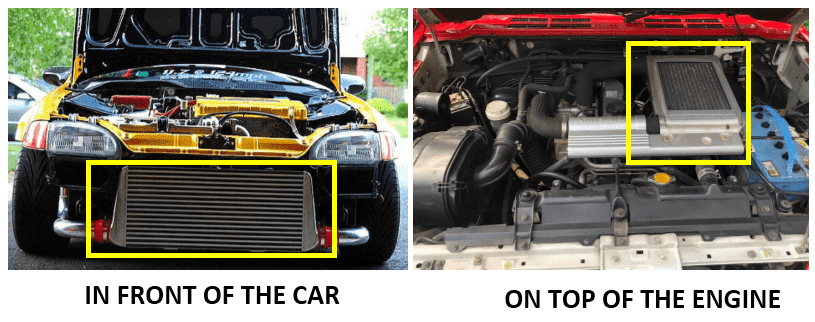The Intercooler function in a car
As we know, the turbocharge engine utilizes high-temperature exhaust gas to rotate the turbine and absorb air to be entered into the intake manifold. The hot air temperature from the exhaust gas will make the turbo temperature rise. As a result, the air that enters the engine also turns hotter.
The hot air temperature entering the engine will increase the risk of pre-ignition as the main cause of the engine knocking problem. In addition, hot air will also make the combustion outputs in the engine is less efficient and more wasteful of fuel.
So, the intercooler component is often added to turbo-engined cars. The goal is to make the air temperature cooler from the turbo that enters the engine. So what is the intercooler? What does it do and how does it work? The following article will inform you about the intercooler function and how it works in turbo-engined cars.
The Intercooler function
An intercooler is a device that is used to cool air that has been compressed by a turbocharger or a supercharger. In the context of an internal combustion engine, the intercooler is typically located between the air intake and the engine.
The intercooler function is to reduce the temperature of the air that is entering the engine. This has the effect of increasing the density of the air, which allows the engine to burn more fuel and produce more power.
Yes, the intercooler significantly impacts the charge effect, as the cooled air has a much higher density in terms of air molecules per cubic centimetre. It will reduce fuel consumption while increasing engine power and efficiency.
The intercooler is an air conditioning device that functions to cool down the air temperature from the turbo. The air supplied by the turbo has a scorching temperature because the turbo uses hot exhaust gas to turn the turbine and deliver new air to the engine.
With an intercooler, the hot air temperature turns to cold. As a result, the air particles become denser due to changes in the air temperature that flow into the engine.
The cooler air will increase the density of the incoming air volume. It will impact the supply of oxygen that enters the combustion chamber compared to hot air. The large amount of oxygen that enters makes the engine more powerful but more efficient in fuel use. In addition, perfect combustion will also be easier to achieve and reduce the resulting pollutants.
Intercooler installation and position in the car
The cold air that flows between the intercooler fin and the intercooler pipe is obtained from two sources. The first is through natural flow while the car is driving and with the help of the intercooler fan motor.
For natural airflow that takes advantage of the vehicle's speed, the intercooler is usually placed at the car's front, just behind the front bumper close to the AC condenser and radiator.
The other one is placed at the top of the engine facing the air duct attached to the hood for the intercooler that uses a fan motor.
Also read:- Engine oil cooler function, types, and how it works
- Variable Geometry Turbocharger - Explained
- What Does The Blow Off Valve Do?
How intercooler works?
Hot air exhaled by the turbocharger will enter and flow into the intercooler pipes as the engine runs. While on the other hand, the cooler air on the outside will continue to flow through the intercooler fins and the intercooler pipes.
The hot air temperature that flows inside the intercooler will be absorbed by the intercooler pipes and intercooler fins which are cooler. The heat is then released into the outside air through the fins and the intercooler pipe.
It is where the heat transfer process occurs. The heat that travels to the intercooler fins will be released, and the cold air flows between them. As a result, the air temperature coming out of the intercooler and towards the intake manifold will be cooler.



